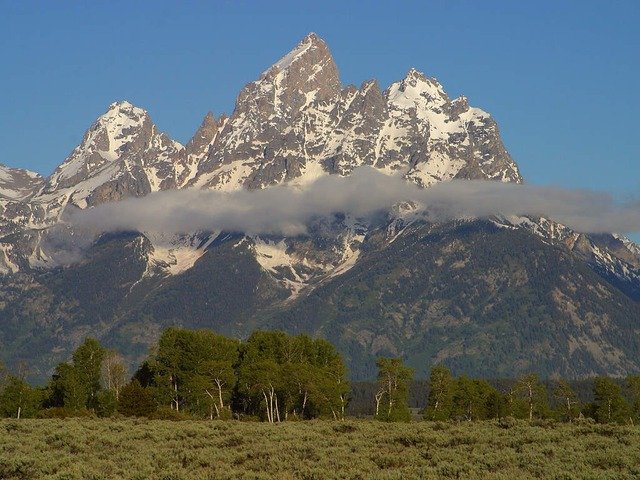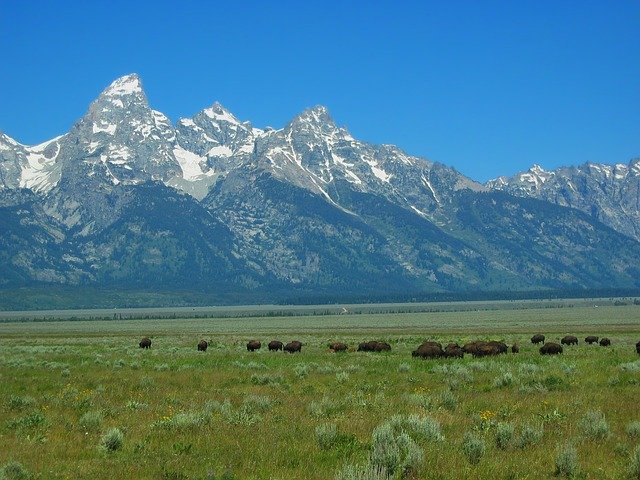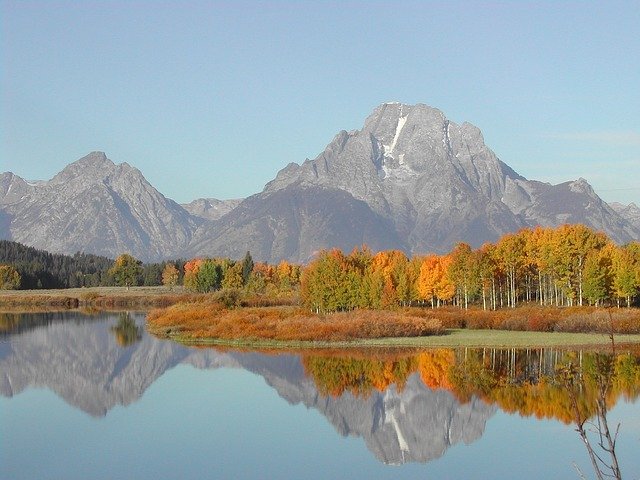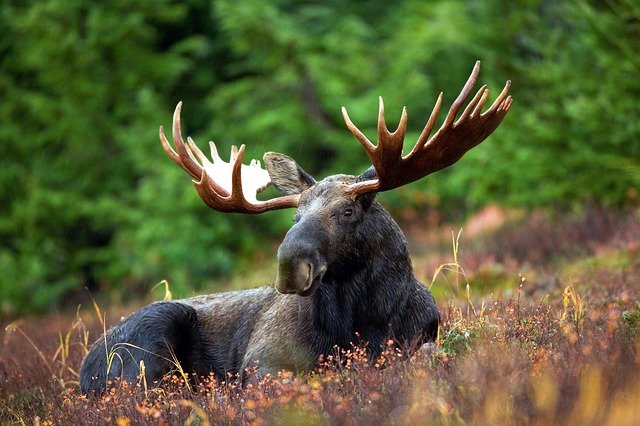Last updated on August 22nd, 2016 at 08:05 pm
Incredible views, unique historical past, amazing wildlife… Be ready to explore the Grand Teton National Park.
As soon as you get to Grand Teton, you will immediately fall in love with it and its amazing scenery.

Interesting Facts
- The park, established in 1929, is located in Wyoming and covers an area of about 300,000 acres.
- The park has more than two hundred miles of trails accessible during warmer months.
- While it may not seem like it, the Teton mountain ranges are the youngest mountains in the world.
- The Grand Teton National Park was established both in 1929 and then again in 1950.
- There is a massive fault at the base of the mighty Teton Range – and after every few years, it results in an earthquake measuring approximately 7.5 on the Richter scale.
So what are you hoping to see when you visit Grand Teton National Park? Majestic mountain scenery, wildlife?
Grand Teton
Grand Teton is the highest point in the great Teton Range with its height of 13,775 feet above sea level. It’s also the second-highest peak next to Gannett Peak in Wyoming.

Inspiration Point
Inspiration Point is another popular destination in the park. It’s a hiking trail that can be reached by taking a boat ride to the other side of the lake or by taking a breathtaking hike along the lake.

Wildlife
Grand Teton National Park is also home to many animals like moose, bison, elk, black bears, and grizzly bears. You can encounter wildlife almost anywhere – on trails, along roads or in developed areas like campgrounds. These magnificent creatures need the cooperation and the help of the visitors in order for them to survive. Your behavior has consequences for all the wildlife, including bears. Their future is in your hands.

Things to be considered when preparing for camping in the Grand Teton national park
Campgrounds
Grand Teton National Park has six campgrounds and each campground is located in different areas in the park that offers unique views and sceneries. Jenny Lake is the most popular campground in the park that offers tent camping only. This campground has 59 sites,10 of which are designated for hikers and cyclists. Campgrounds in Grand Teton has modern comfort rooms , but do not have showers. All campsites are available on a first come, first serve basis, however, some campgrounds accept reservations for those who wanted to experience group camping.

There are also a few great choices for RV camping in Grand Teton. Colter Bay Campground (335 sites), Flagg Ranch Campground (175 sites) and Gros Ventre Campground (300 sites) offers electrical hook-ups, laundry, and dump stations. These campgrounds let you enjoy your stay at your recreational vehicle with beautiful and relaxing views, and if you are lucky, a glimpse of some wildlife.
Backcountry camping options is also available and requires permit. Reservations for backcountry camping are only available during certain times of a year.
When To Go
Grand Teton National Park is open year round and offers variety of experiences and activities at each season making a visit in the park anytime of the year enjoyable. However, there are certain months of the year that you may want to take note when planning your visit to the park:
- June tends to be a rainy month.
- Warm and sunny days are expected in July and August and all roads, trails, and visitor centers are open.
- September and October brings pleasant days and chilly nights. In this month, the park is less crowded.
- Winter season is one of the perfect time to enjoy Grand Teton with popular activities such as skate-skiing, snowshoeing, cross-country skiing that are highly in demand in the snowy winters.
- In spring and fall, some services and roads are limited. Moreover, lesser crowds and lower rates in the park are expected.
- To maximize your trip, visit the park in late May, June, or September as most services are open and the crowd is smaller.

Connectivity
Cellular phone reception is available in most developed areas and sometimes on trails.Public phones are available at the following areas in the park : Dornan’s, south Jenny Lake, Signal Mountain Lodge, Moran Entrance Station, Jackson Lake Lodge, Colter Bay Village, Leeks Marina, and Flagg Ranch.
Wildlife Safety
Oftentimes, wildlife can be seen along the roads and this is not really good. Animals feeding along roads could quickly become comfortable around vehicles and visitors increasing their risk of being hit by a car. When people stop for a closer look or a picture, animals may become bold and approach or feel threatened and attack.
Visitors can help keep all wild animals safe by following the simple rules of wildlife viewing.Tourists are advised to only use designated pull outs when viewing wildlife, and they are advised to stay in their vehicles.
- Always maintain a distance of at least 300 feet from all large animals.
- Use binoculars, spotting scopes, or telephoto lens to get a close up view.
- Small cameras may tempt you to get too close to an animal but remember to never do this.
- Never get between an adult and its offspring. Females with young ones are especially defensive.
- Do not leave food, garbage or coolers in an open truck or the exterior of a vehicle.
- Never feed a bear or ANY wild animal.
- Do not approach nesting birds or burrows of animals. Give all animals the space they need.
- Follow directions from park staff. Remember, the law prohibits approaching, harassing or feeding wildlife.
Tips for Planning your camping trip
- It is always advisable to plan your trip accordingly. Read about campground restrictions, cost, amenities, location, camping facilities, and other helpful information.
- Check for local weather information and weather forecast prior to your trip.
- Check the park website for more information on opening and closing dates as season dates may vary each year.
- Contact the entrance stations or visitor centers if you want to know more about campground status.
- Camping along roadsides, in parking areas, and at overlooks is not allowed in the park.
- Pack appropriately during winter and bring multi-layered clothing, mittens, and cold weather boots. If you plan to visit during spring, summer or fall, pack your rain gear, plenty of blankets and sleeping bags.
- The campgrounds are in bear country! Be sure to store all your food and scented items outside of your tent and use the bear box provided in each campsite. Best of all, be aware and practice proper food storage and read the bear safety web page.
- All visitors are advised to stop by the visitor center for more information. Being a responsible observer is a must as you enjoy the beauty and majesty of the wildlife in Grand Teton National Park.
Resources:
http://www.dirtinmyshoes.com
http://www.grand-teton.org
http://www.jacksonholetraveler.com
http://travel.nationalgeographic.com/
https://www.rei.com
http://www.fodors.com
https://gillettesinterstaterv.com






